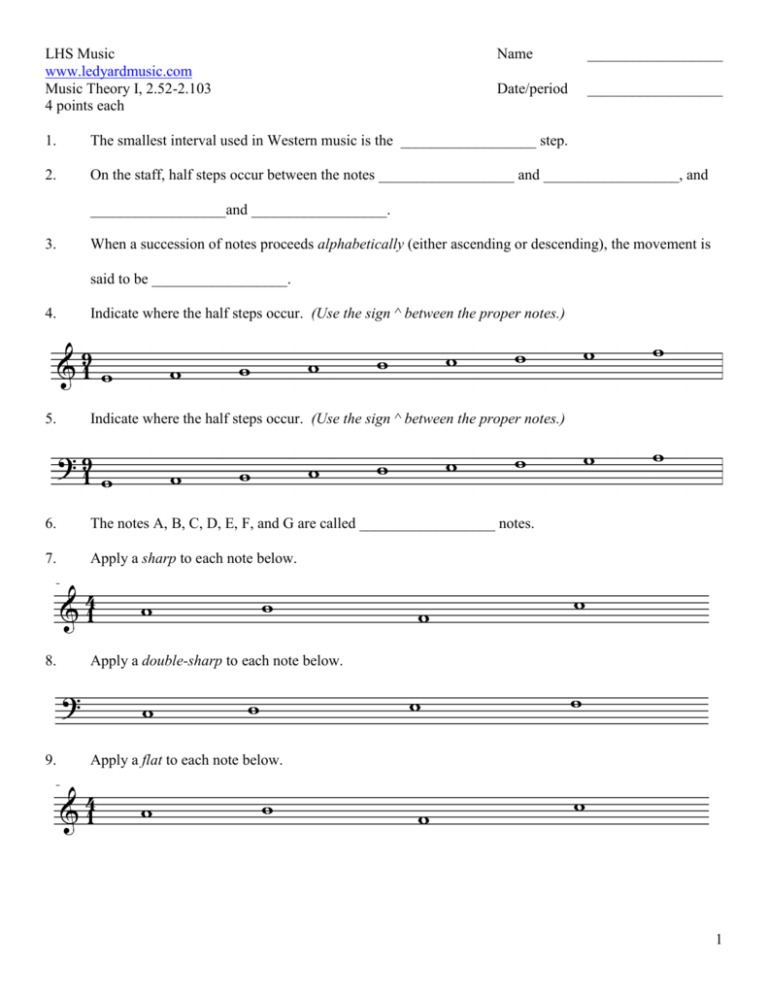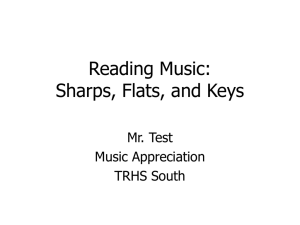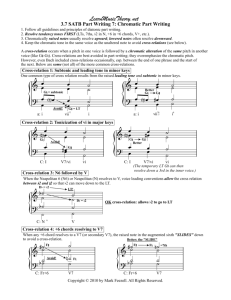lhs music theory homework 2.52-105
advertisement

LHS Music www.ledyardmusic.com Music Theory I, 2.52-2.103 4 points each Name __________________ Date/period __________________ 1. The smallest interval used in Western music is the __________________ step. 2. On the staff, half steps occur between the notes __________________ and __________________, and __________________and __________________. 3. When a succession of notes proceeds alphabetically (either ascending or descending), the movement is said to be __________________. 4. Indicate where the half steps occur. (Use the sign ^ between the proper notes.) 5. Indicate where the half steps occur. (Use the sign ^ between the proper notes.) 6. The notes A, B, C, D, E, F, and G are called __________________ notes. 7. Apply a sharp to each note below. 8. Apply a double-sharp to each note below. 9. Apply a flat to each note below. 1 10. Apply a double-flat to each note below. 11. Apply a natural to the second note in each case. 12. The sharp (#) raises the pitch of a basic note by the interval of a __________________ step. 13. The flat (b) lowers the pitch of a basic note by the interval of a __________________ step. 14. T/F - The natural ( ) has no effect upon a basic note unless it previously has been affected by another accidental or by a sharp or a flat in the key signature. __________________. 15. Write the notes as directed. D# Ab E Gx Bbb 16. If an accidental is to be cancelled within a measure, what sign is used? __________________ 17. Accidentals remain in effect during the measure in which they occur, or when the altered note is __________________ across a bar line. 18. Accidentals other than the sharps or flats in the key signature are cancelled automatically by the __________________ line. 19. What is the pitch of the fifth note below? __________________ 2 20. Write the name of each note. ___ ___ ___ ___ ___ 21. Enharmonic notes are written differently but have the same __________________. 22. Write an enharmonic equivalent for each note 23. Is the interval D up to D-sharp a diatonic or a chromatic half step? __________________. 24. Write a diatonic half step above F. 25. Write a chromatic scale ascending from C to C. (Use only sharps) 3











